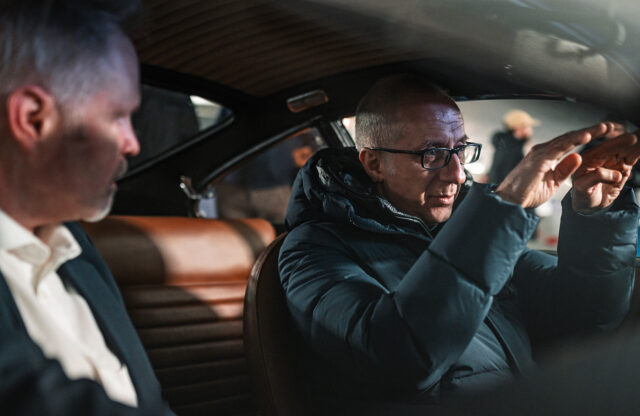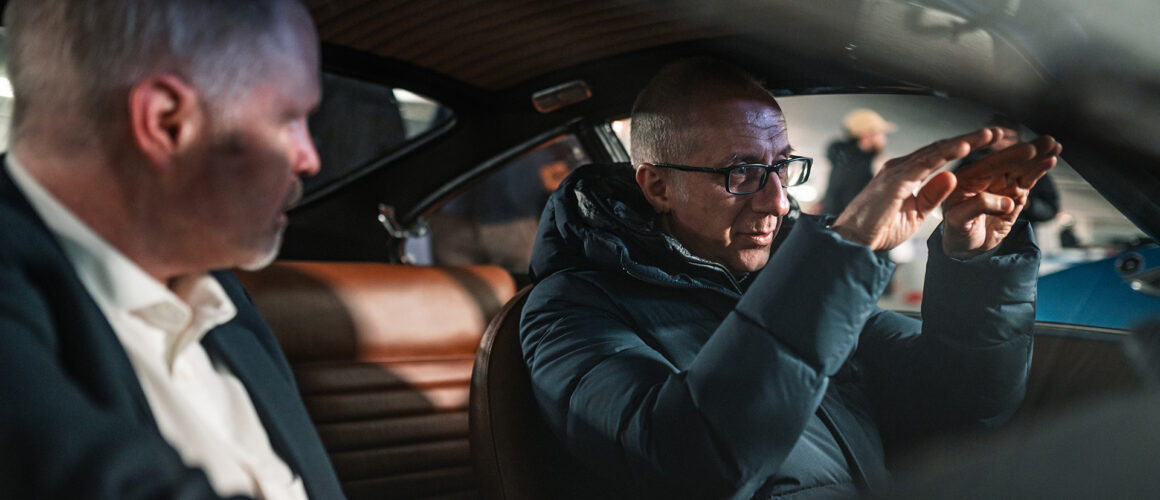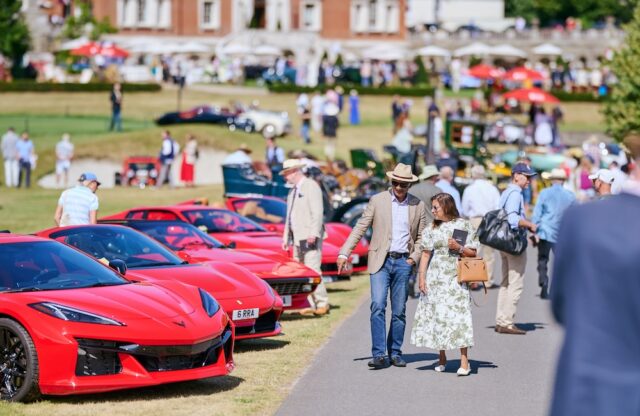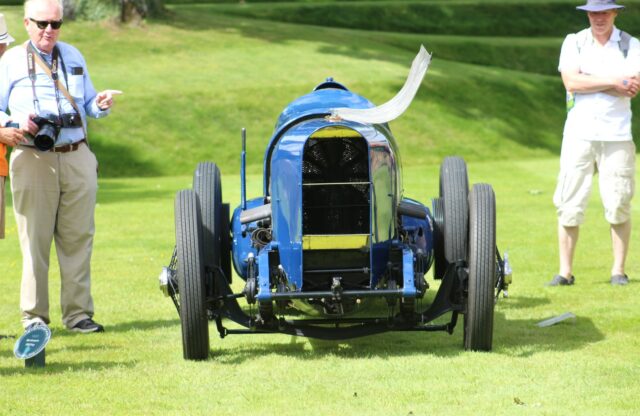INTERVIEW: WAYNE BATTY | PHOTOS: LAMBORGHINI
At the recent (if sadly cancelled) ICE in St Moritz, we sat down with global after sales director for Lamborghini and head of Polo Storico Alessandro Farmeschi. Instead of meeting in one of the many fine, but most likely noisy, coffee spots in town, we opted for the beautiful tobacco-brown interior of the 400 GT 2+2 that Lamborghini chose to display at the event.
Alongside this Touring Superleggera-designed beauty was an equally rare Jarama GTS, all decked out for a fun day on the ice. Fortunately, Lamborghini arrived a few days before the heavy snow brought proceedings more or less to a halt, and managed to get some fantastic images of the cars out on the lake. While the Countach and Miura received a lot of attention (deservedly so), bringing these early 2+2s out here showed once again how keen Lamborghini is to preserve its entire history.

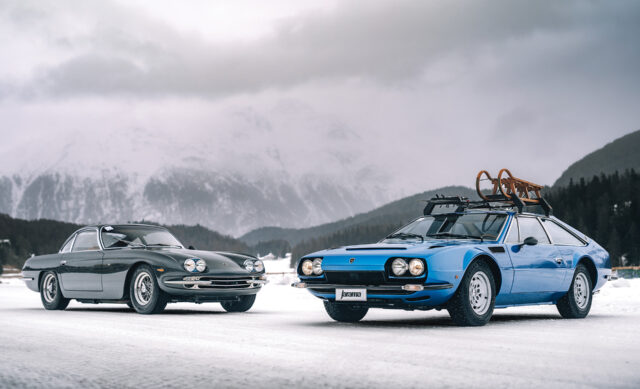
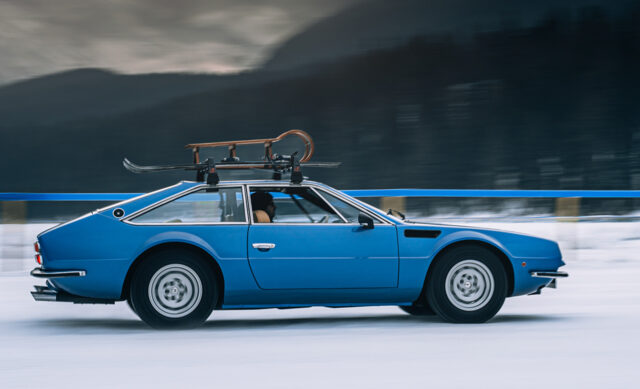
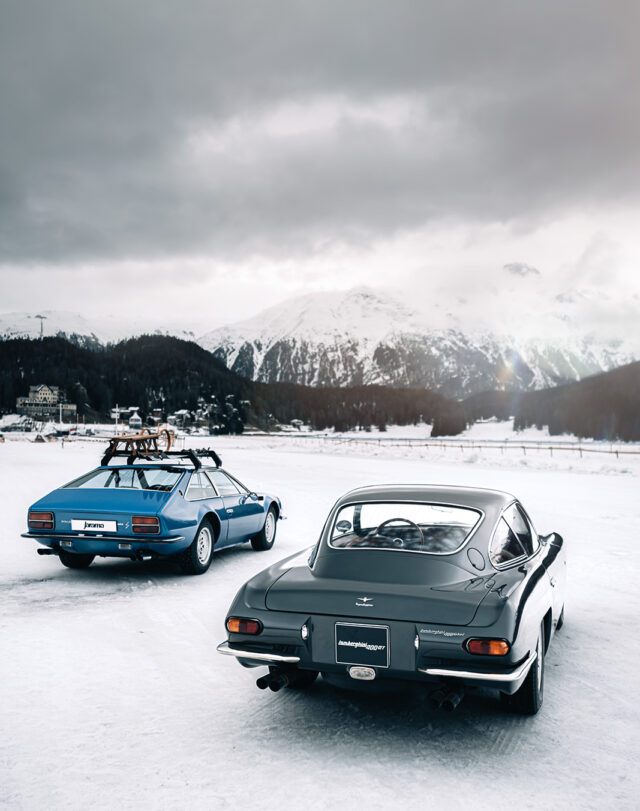
What is your vision for Polo Storico?
My vision for Polo Storico is pretty simple; it is to guarantee that all the knowhow we have is maintained within the company in terms of an asset. And also, my goal is to create a wider knowledge in the company, within the organisation, in terms of all that we have discovered up to now about our cars. Because the challenge is to have people belonging to the company for a long time, then you get a transmission of knowledge from generation to generation.
In the past, all communication was manual, while today a lot of things are done in an electronic way, which I believe is what makes it tricky. For example, we are lucky to have one of our team members from Polo Storico Commercial, Niccolò Ghirelli, who joined Lamborghini a few years ago. He’s pretty young in the organisation, but he has a great passion.
These are the people who can bring more. They help to keep all the information moving from today into the future. So that’s for me the most important part, because then regarding certifications, regarding restorations, we have done a lot of work to improve processes, to make them solid and consistent. That is all good, but I think it’s more about the human being, the people who make up the team.
Why is heritage so important to Lamborghini?
We consider heritage and the history of the company to be an asset, because it’s clear that what we are today is due to what we were in the past. And so even if we want to go beyond, we cannot forget about what we have done and our heritage. So in this sense, Polo Storico – that is the department born in 2015, with the scope of maintaining the heritage of the company – has been working with customers in order to certify and restore cars, but also to do historical research. You know, many things happen in the past, and so we are researching also from the supplier point of view about what the company has done through the years.
Have you come across anything surprising while carrying out this research?
No surprises yet, but I think one of the good exercises we have made was a couple of years ago when we announced the 1971 Countach prototype that we built from scratch. Basically, we had a little information here and there, but not the complete project, because at that time this was just a prototype to test the mood and feeling, and so this car was destroyed.
We decided to reproduce this car from the drawings, supplier documentation and also the pictures. So with Centro Stile we did a 3D model of this car, and we reproduced it, which took 25,000 hours. So these are the kind of exercises that we do as Polo Storico. But not often. I think at the moment we can say it remains a unique study, but it shows our potential.
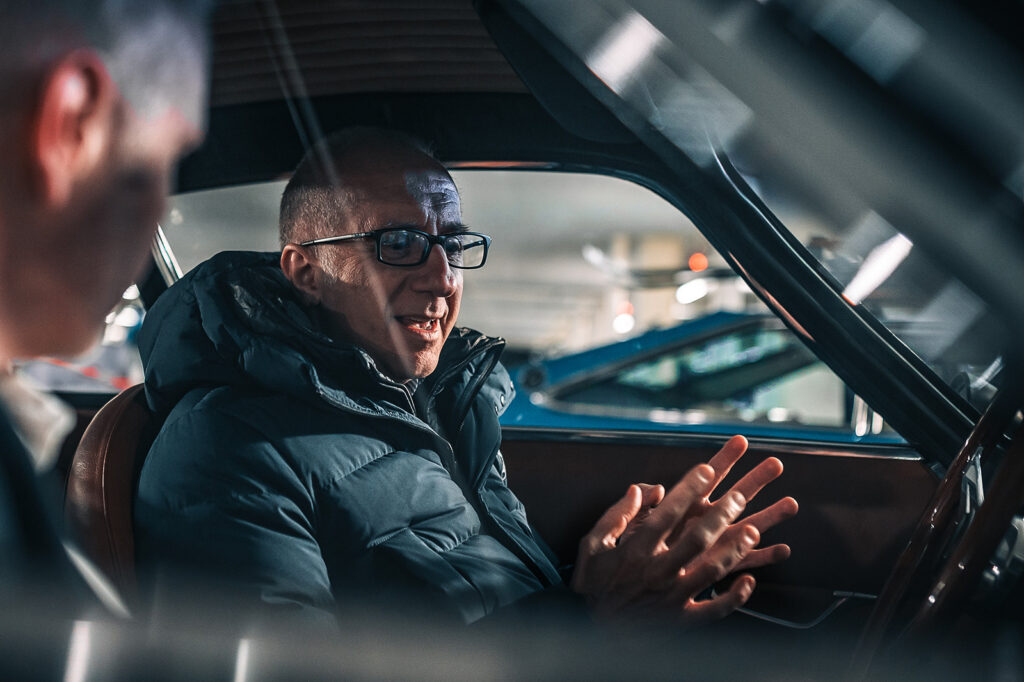
What cars are undergoing restoration at Polo Storico right now? Anything unusual?
At the moment we have a few cars that we are restoring. We have an Espada from Japan. We have a few Miuras. So we have always something to do, because we never stop. Still, our goal is not to produce many restorations. We don’t want to go beyond just for the sake of restoring cars. But what we want to do must be spot on, done incredibly well in terms of finishing and in terms of solutions. This is exactly what we do, so not quantity but quality.
Have there been any changes to the market in terms of which models you are being asked to restore?
We have now, apart from Miura, we have the Countach. We also had the LM002. Now I think it’s time to start seeing a few Diablos.
Are you finding any specific challenges when it comes to restoring some of the more recent cars, such as the Diablo?
No, not really, no. At the moment we have an availability, in the entire range of cars from the 350 GT until Diablo, of 75 percent spare parts. We are making most of these ourselves. When we need new parts, we start from the drawings. We want to understand who can produce this part, because it’s not a given that you find the same supplier. Most probably not. But we have the drawings, and so at that point, we can go and check exactly how the piece was produced and remake it perfectly.
As it is more than 20 years old, does the Gallardo fall under your remit now?
No, not yet. When it is closer to 30 years old, it will be added.
With the first production Countach being built in 1974, do you have any special plans to celebrate the car’s 50th anniversary this year?
Not for this year. We did already the celebration of the 50th anniversary of the Countach [1971 concept] in 2021, as previously mentioned. And for that we specifically developed the limited-edition Countach LPI 800-4 in recognition of the original car that opened the door to the design language of Lamborghinis until today.
Which Countach models are the most sought after at the moment?
The Countach Periscopio is the one that is, let’s say, more appealing.
What about 25th Anniversary models?
When you start talking about the Countach, sometimes, let me say it’s enough just to have a Countach. So because it’s so iconic, and so unique and there are not so many. In the end, Countach is Countach. Of course, the condition of the car makes it more, or less, appealing, but in general it’s the Periscopio model that our clients, our collectors, look for more frequently.
From the entire Lamborghini portfolio, from 350 GT all the way up to Murciélago, is there one you’d call your favourite?
The Countach. [Without hesitation]
Is interest growing in the GT models such as the Islero and Jarama?
Yes, of course. But if you take our product line-up, the ones that really changed the automotive industry, it’s the Miura, because that has been a disruptive car in terms of design. The other disruptive car, with volume sales behind it, is the Countach. Then the LM, of course, and then all the V12 line – the Diablo, the Murciélago. As for the GT cars, I believe they were a good addition, so I like a lot for instance the Islero as a car. But they were produced for a limited period of time, more or less in a span of ten years, while the Countach-oriented style of car has been part of the company for more than 50 years.
It’s very interesting that you have the Miura, which is widely acknowledged as the first supercar, and one of the most beautiful cars ever built, but yet Lamborghini DNA is all about the Countach – dramatic and extreme, but not beautiful.
Yes, with the Countach we started the scissor doors, the unique silhouette line and other features that have given Lamborghini its design DNA. But I would like to add, because it’s something that we are working on a lot as Polo Storico to communicate, that all of our cars played a role in the evolution and are an important part of our history.
Polo Storico is very careful to not only look after the main cars that everybody knows. Here [at ICE] for example, when we have the opportunities, we choose to bring these two very beautiful cars. They are a stunning part of the history, but not so well known for the majority of people. This was a strong decision, and it’s in the vision of Polo Storico to share all the history. It’s clear for us, every car has the same historical value to the company. I mean, there is not one better than the other.
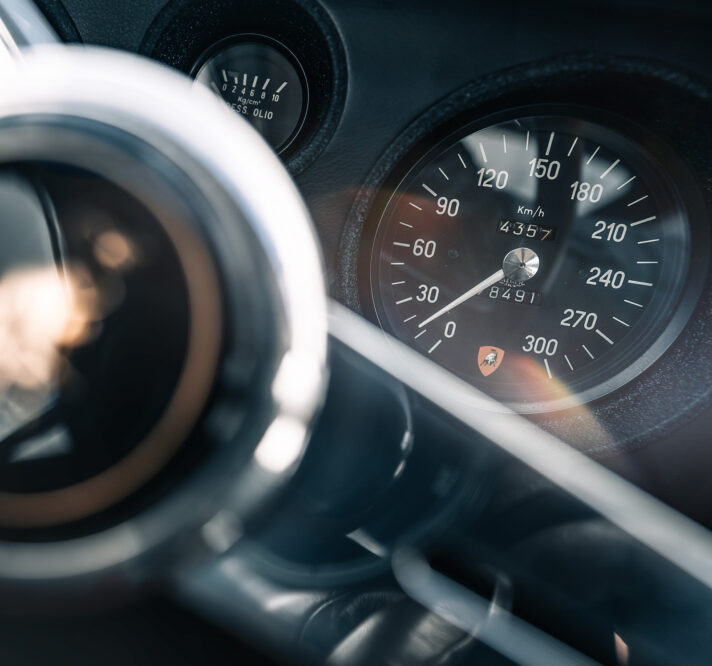
This was a good choice. It’s a super environment for an interview, much better than a coffee shop for sure
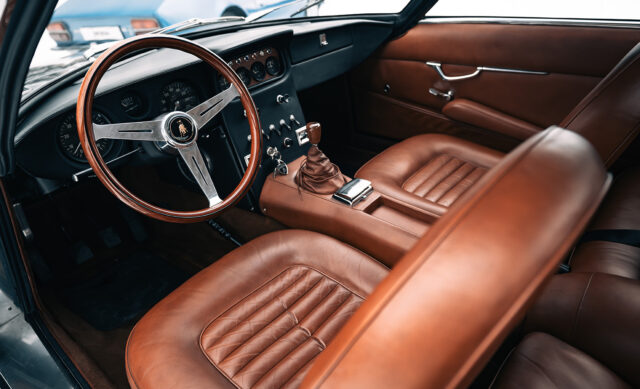

These gauges [pointing to the fine craftmanship and detailing of the 400 GT’s instrument panel] have so much beauty and character. What will it be like to look back in 30 years at a modern car’s digital cockpit and display?
Honestly, it is a tough question. I have no answer. We were born with these [gauges], and so for us it is our heritage. Maybe for our kids, who in the future might have something like holograms, then these current digital displays will be their heritage.
Who knows, that may be exactly how it pans out. For now, though, I’ll take the tactility and artistry of this 1968 Lamborghini 400 GT’s instrument panel over anything new on sale today. As I thanked Alessandro for his time, he paused, and said: “This was a good choice. It’s a super environment for an interview, much better than a coffee shop for sure.” I couldn’t agree more.
With thanks to Alessandro Farmeschi, Enrico Pavesi, Camilla Manzotti and Juliet Jarvis.
